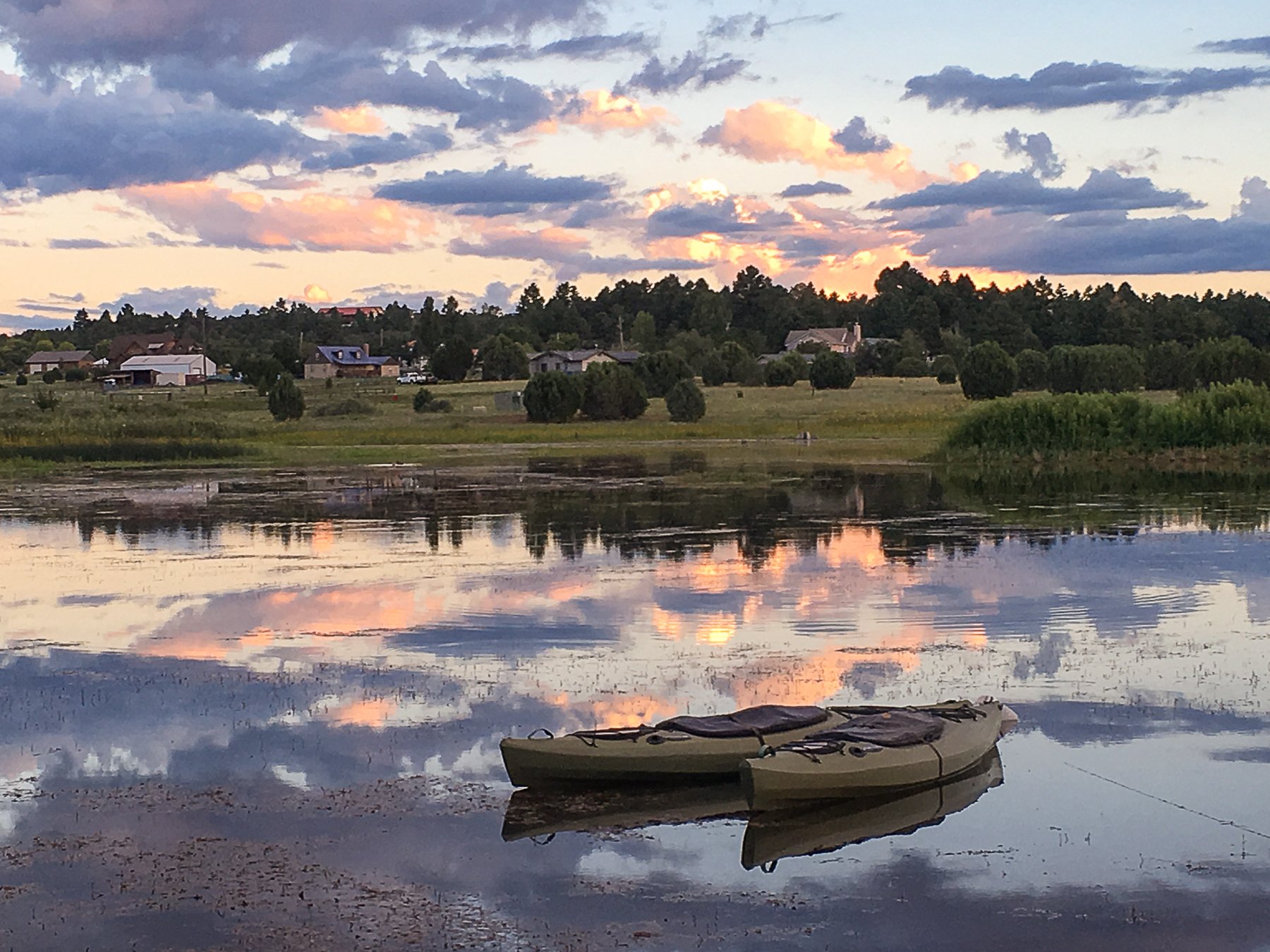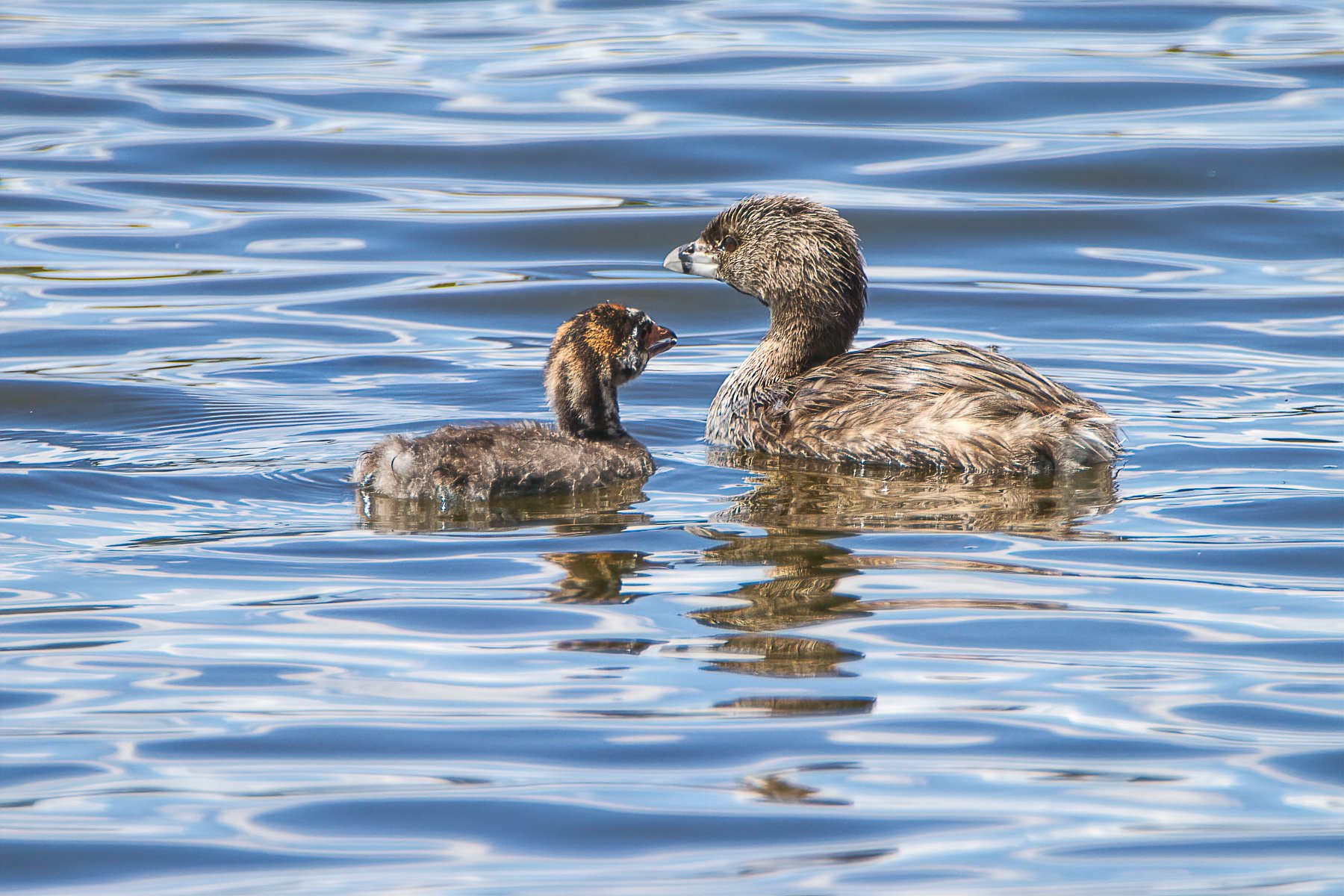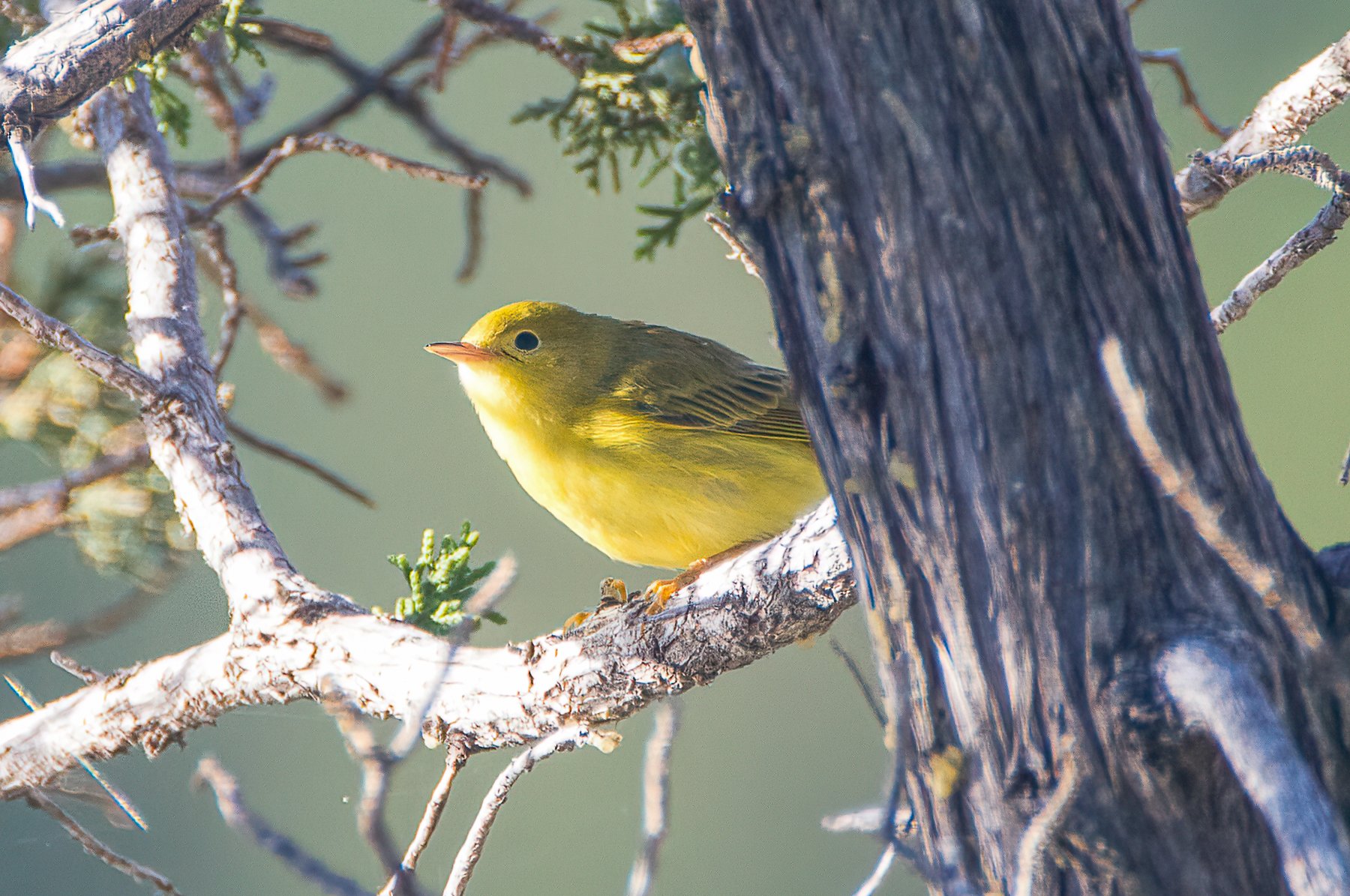Buck & Harry’s Stag Party
September 2, 2017
I have had the pleasure of spending my birthday in the White Mountains of Arizona for several years now, but this was by far the most extraordinary trip we've taken to Show Low. Mother Nature smiled upon us, revealing some of her most precious mountain treasures and our dear friends, Terri and Christi, shared with us some of their favorite mountain spots, as well.
Marina at Big Lake
Driving southeast of Show Low to Big Lake on our first day, Christi was the perfect birding driver, stopping whenever something caught my eye. Terri, riding shotgun, spotted the first of what would be several herds of elk we saw that day. Paul and Ellie kept watch for smaller critters like the cute little Golden-mantled Ground Squirrels. Osprey were in abundance, sitting atop tall Ponderosa pines and gliding effortlessly over lakes and ponds. Swainson's Hawks perched on tree snags and I even caught sight of my first Mountain Bluebird. We stopped to visit Angel, our precious little widget of a dog, at the place where we scattered her ashes last year at Sheep's Crossing near Greens Peak. The secluded spot, a circle of Ponderosas and Aspens so tall they seemed to touch the sky, form a protective, eternal cathedral for her, her brother and her mother, whose ashes we also left here. Feather light rain drops fell on our upturned faces as we paid our respects to sweet Angel and her family. As we turned to leave I swear I felt her brush against my leg as she bounded out across the spongy floor of pine needles and leaves and into the bright green fields beyond.
Sheep’s Crossing at Greens Peak
Most of our time was spent at Fool Hollow Recreational Area, where we secured our favorite camping spot at the end of Redhead Loop, just 200 feet off the water's edge. The lake was higher than when we were here in June, but we noticed there were not as many water birds around. The crowd of 60 or so Canada Geese were reduced to just three!
We rose each morning to walk the lake amid spectacular sunrises and sunflower fields aflutter with bright yellow Lesser Goldfinches and brilliant Blue Grosbeaks. From our camp chairs, we witnessed a heron stab a huge trout for its evening meal, watched Osprey circling above the lake throughout the day and delighted in a family of Pied-billed Grebes, who floated and dined in our little part of the lake.
We had a perfect view from our camper of two bull elk one morning.
One morning, we awoke to a picture postcard scene: two bull Elks grazing just 100 feet from our campsite! I grabbed my camera and watched in awe as they playfully sparred, antler to antler, and pushed each other back and forth across the field. They didn't seem too serious as one or the other would pause, antlers still entangled, and reach out to grab a mouthful of grass. Elk breed in the fall so this ritualistic wrangling will turn more aggressive as the bulls becomes ready for the rut and begin to form their harem.
Gathering monsoon clouds.
Every afternoon the monsoon clouds would build into towering mountains of dark fluff and then break open, silencing the birds and washing over the campsite in great curtains of water. We sat inside anxiously watching the too-close-for-comfort flashes of lightning, followed quickly by thunderous booms that shook our little camper to its core. The storms always cleared away by nightfall, though, and morning would dawn bright and clear.
On August 21, the day of the solar eclipse, we constructed a viewing screen out of the only piece of cardboard we could find on board - a box that held our coffee pods - and watched as the moon darkened the sun's light for a period of time.
Of course, that got me to thinking...what do birds do during a total eclipse? The Cornell Lab of Ornithology reported that through citizen observations they determined that aerial feeding birds like swallows and swifts appeared at low altitudes as the midday light waned, as though descending to roost. Doppler radar imagery corroborated these observations, showing aerial animals (including insects and birds) getting lower to the ground as the eclipse progressed, being lowest in the minutes after totality and then taking to the air again as the eclipse ended. Other observers noted that owls were out, nocturnal migrants acted as if they were set to depart for a night-long migratory journey and birds in general were acting confused, flying erratically and coming in to roost. Our eclipse was only at 64%, so we didn't notice as much as some might have in other parts of the country. Still, it was quite something to observe!
Woodland Lake, Pinetop-Lakeside
I celebrated my birthday by stopping by the local Ranger Station and purchasing my Senior Lifetime Pass to the National Parks - five days before they raised the price from $10 to $80. I am officially an old fart! In the afternoon we walked around Woodland Lake in Pinetop-Lakeside and Paul, my bird spotter, pointed out several Lewis' Woodpeckers, more Lesser Goldfinch and lots of baby Pied-billed Grebes, as well as a lifer - a Spotted Sandpiper. I'll make a full-fledged birder out of him yet! Ellie was, as always, impatient with all the stopping and observing.
It was hard to pack up and leave this place where the wild things live, but I take comfort in knowing that we'll be back soon! Click on an image to bring up the slide show.





















